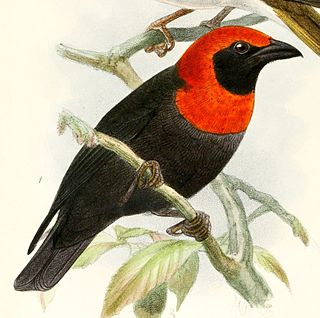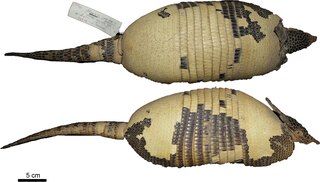
Herring are forage fish, mostly belonging to the family of Clupeidae.

The Cassini–Huygens space-research mission, commonly called Cassini, involved a collaboration among NASA, the European Space Agency (ESA), and the Italian Space Agency (ASI) to send a space probe to study the planet Saturn and its system, including its rings and natural satellites. The Flagship-class robotic spacecraft comprised both NASA's Cassini space probe and ESA's Huygens lander, which landed on Saturn's largest moon, Titan. Cassini was the fourth space probe to visit Saturn and the first to enter its orbit, where it stayed from 2004 to 2017. The two craft took their names from the astronomers Giovanni Cassini and Christiaan Huygens.

The southern river otter is a species of otter that lives in Chile and Argentina. Although called a "river otter", it inhabits both marine and freshwater environments. It sometimes is considered a subspecies of Lontra canadensis. The southern river otter is listed as endangered, due to illegal hunting, water pollution, and habitat loss.

The chestnut-backed antbird is a passerine bird in the antbird family. It is found in humid forests in Central and South America (Chocó-Magdalena), ranging from eastern Nicaragua to western Ecuador. It mainly occurs in lowlands up to an altitude of 900 metres (3,000 ft) m, but locally it occurs higher.

A species that is extinct in the wild (EW) is one that has been categorized by the International Union for Conservation of Nature as known only by living members kept in captivity or as a naturalized population outside its historic range due to massive habitat loss.

Monarrhenus salicifolius is a species of plant in the sunflower family found in rocky areas. It is endemic to the Mascarene Islands: Mauritius and Réunion.

Böhm's spinetail, also known as the bat-like spinetail, is a species of swift in the family Apodidae.

Neafrapus is a genus of swift in the family Apodidae. It contains the following species:

The white-crested hornbill, also known as the long-tailed hornbill, is a species of hornbill found in humid forests of Central and West Africa.

Cassin's malimbe is a species of bird in the family Ploceidae. It is found in Cameroon, Central African Republic, Republic of the Congo, Democratic Republic of the Congo, Equatorial Guinea, Gabon, and Ghana.

Cassin's flycatcher, also known as Cassin's grey flycatcher or Cassin's alseonax, is a species of bird in the family Muscicapidae. It is found in Angola, Benin, Cameroon, Central African Republic, Republic of the Congo, Democratic Republic of the Congo, Ivory Coast, Equatorial Guinea, Gabon, Ghana, Guinea, Liberia, Niger, Nigeria, Rwanda, Sierra Leone, Togo, Uganda, and Zambia. Its natural habitat is subtropical or tropical swamps.

The Baudó oropendola is a species of bird in the family Icteridae. It is endemic to Colombia. Its natural habitat is subtropical or tropical moist lowland forests, which are threatened by destruction. As it is only known from a small number of locations, its conservation status has been assessed as "endangered" by the IUCN.

The golden-collared woodpecker is a species of bird in the family Picidae. It is found in northern Brazil, the Guianas, Venezuela and far eastern Colombia.

Yepes's mulita or the Yungas lesser long-nosed armadillo is a species of armadillo in the family Dasypodidae. It is endemic to Argentina and Bolivia. Its natural habitat is subtropical dry forests. The species was renamed D. yepesi because the type of D. mazzai was suspected to correspond of other species of Dasypus, which it was later proved wrong, becoming D. yepesi a synonym of D. mazzai.

Magicicada cassini, known as the 17-year cicada, Cassin's periodical cicada or the dwarf periodical cicada, is a species of periodical cicada. It is endemic to North America. It has a 17-year life cycle but is otherwise indistinguishable from the 13-year periodical cicada Magicicada tredecassini. The two species are usually discussed together as "cassini periodical cicadas" or "cassini-type periodical cicadas." Unlike other periodical cicadas, cassini-type males may synchronize their courting behavior so that tens of thousands of males sing and fly in unison. The species was first reported to the Academy of Natural Sciences of Philadelphia by Margaretta Morris in 1846. In 1852, the species was formally described by J. C. Fisher and given the specific name cassini in honour of John Cassin, an American ornithologist, whose own report was included by Fisher in his publication.

The Apodinae are a subfamily of swifts and contain the following species:
Physalaemus insperatus is a species of frog in the family Leptodactylidae. It is endemic to southern Brazil and is only known from its type locality, Serra da Pedra Branca do Araraquara in Guaratuba, Paraná. The specific name insperatus means "unexpected" or "surprising" in Latin and alludes to the fortuitous finding of a new species among old museum specimens, originally identified as Physalaemus olfersii; taxonomically, it is part of the so-called Physalameus olfersii species group.

















